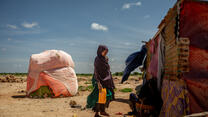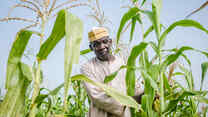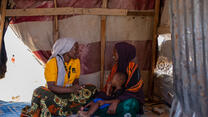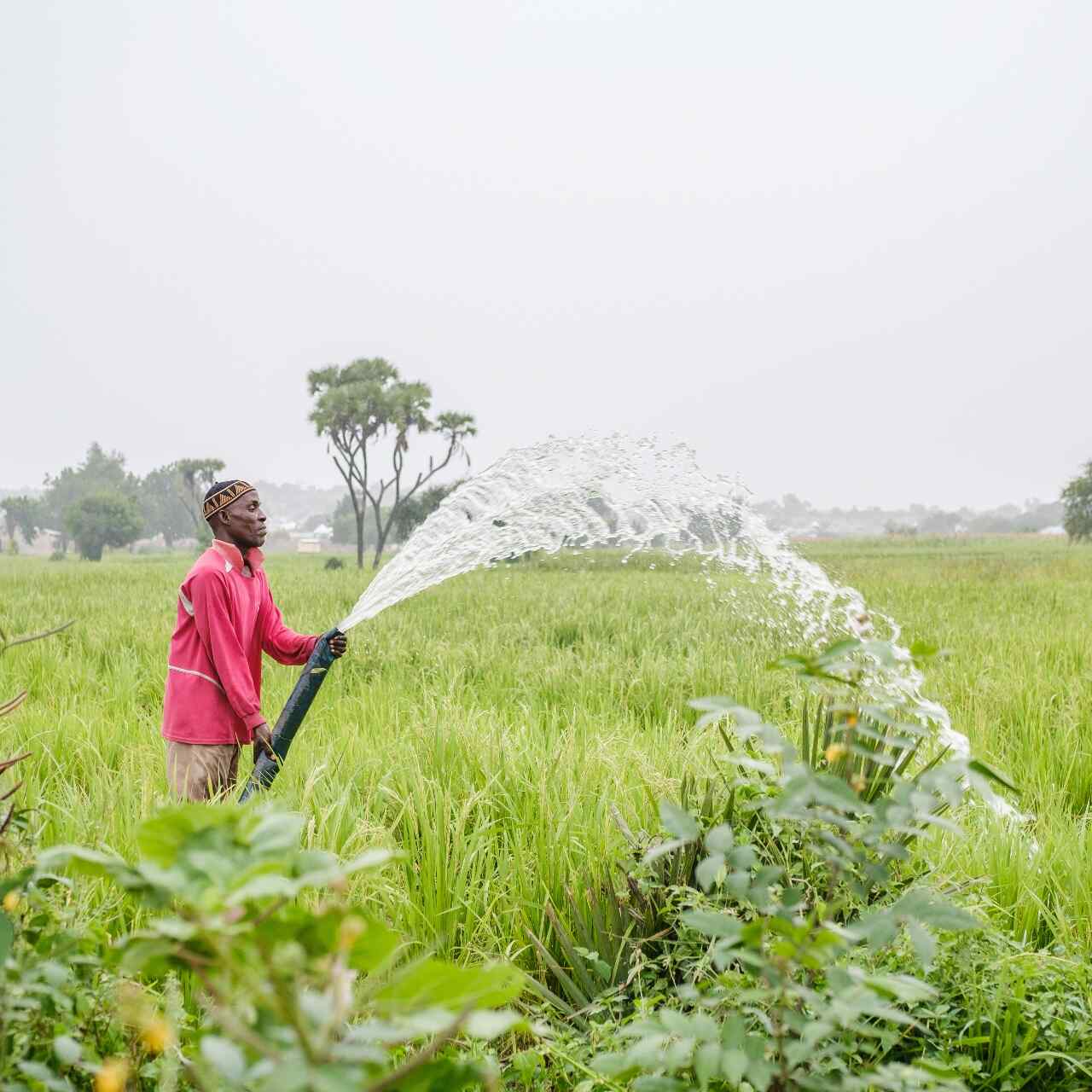
The IRC has identified 16 countries¹ as strong examples of contexts simultaneously impacted by climate change and conflict. Despite being home to only 10 percent of the world’s population, these countries account for 60% of global humanitarian needs. Although these 16 countries contribute only 3% of the annual global greenhouse gas emissions, they are disproportionately affected by the global climate crisis.
Unfortunately, these communities are routinely excluded from or marginalised within international efforts to address climate change. However, by improving the allocation and delivery of climate finance, we can help these conflict and climate-affected countries adapt to the changing climate and mitigate the impact of climate disasters.
Below, learn more about climate finance and how we can support the vulnerable communities that stand to benefit the most.
What is climate finance?
Climate finance refers to funding and resources used to take action on climate change. This funding can come from various sources, including national governments, international organisations, private businesses and grassroots fundraising campaigns.
During the COP15 climate summit, held in 2009, world leaders pledged to mobilise $100 billion annually in climate financing by 2020 to support climate action in developing countries. This promise was not kept.
Donors must fulfill the $100 billion-per-year climate pledge to ensure that the most vulnerable countries have the resources to build resilience and adapt to the impacts of the climate crisis.
What is the impact of climate finance?
Climate financing serves as a critical pathway to invest in the climate adaptation and resilience efforts of conflict-affected and climate-vulnerable countries. Without adequate climate action, communities become increasingly vulnerable to climate shocks like floods and droughts.
The IRC leverages climate financing to work with communities affected by conflict and the climate crisis, introducing innovative approaches to improve adaptation and mitigate the effects of climate change where it is most needed.
The IRC is working with farmers in Syria to experiment and determine the best seeds that are adaptable to the changing climate. Our goal is to encourage farmers to adapt to the effects of climate change by providing them with high-quality seeds that can withstand its impacts.
Throughout the project, the IRC is also promoting women's participation in the agricultural sector, as well as multiplying and scaling the use of higher-yielding and climate-resilient seeds. We are currently expanding this project to Pakistan, Niger and South Sudan to improve the efficiency and sustainability of farming practices in these regions.
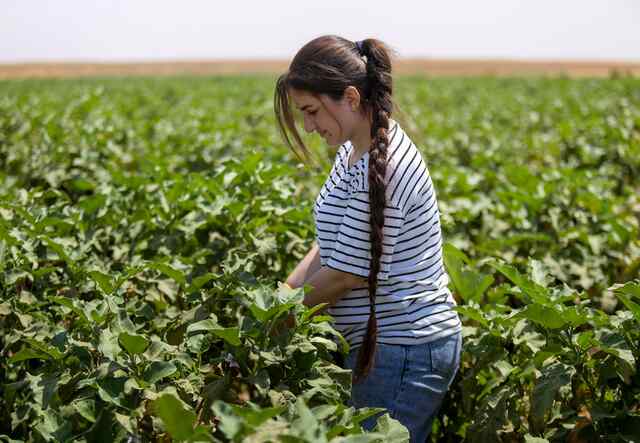
The IRC has carried out a research pilot programme in Nigeria that provided cash assistance to flood-prone communities before a flooding event occurred. This approach is different from traditional methods which give aid after a climate-related disaster has already hit a community. Despite the ability to predict 20% of disasters, only 1% of global developmental assistance is currently allocated to anticipatory action.
The results of the IRC’s pilot in Nigeria demonstrate why climate financing for anticipatory programming is critical.
Households that received cash assistance before a flood event had lower rates of hunger than recipients who received cash after the flood. Anticipatory cash empowered recipients with the resources to protect their livelihoods, helping them take preemptive actions, like stockpiling food and evacuating households and livestock ahead of a climate disaster. They also invested in income-generating activities at higher rates, indicating that this approach to cash delivery can help build long-term resilience capacity.
Learn more about the IRC’s climate programming.
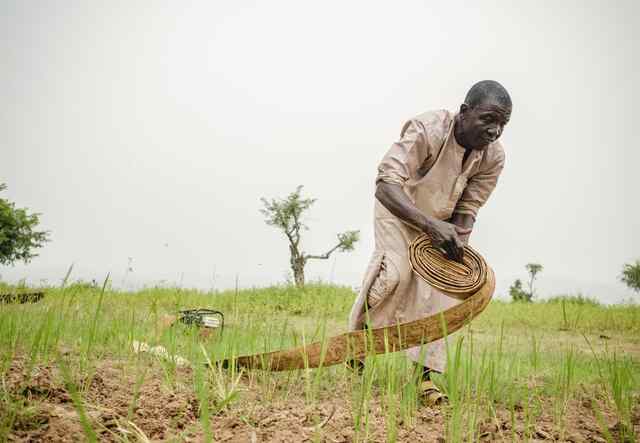
Inequitable distribution of climate finance
Climate finance is a powerful tool that can change the ways communities prepare and respond to climate shocks. But, many of the countries that are already dealing with the effects of climate change do not receive adequate financing.
The more fragile a country is, the less climate financing it receives. Conflict and climate-affected countries receive 66% less climate financing per capita than non-conflict countries.
A significant portion of the aid sent to these countries is often misdirected and fails to achieve its intended purpose. It focuses on emission mitigation rather than climate adaptation, resilience and anticipatory action.
How can we improve climate finance?
Global donors must deliver climate finance equitably and leverage this critical tool to improve climate resilience in the most vulnerable communities. This will require a change in the prevailing approach to climate financing based on the proven efficacy of other investments.
Climate finance donors should pledge to allocate 50% of all climate funding to adaptation measures by the year 2025. This funding should prioritise adaptation finance for small-scale agriculture in the 16 countries that are impacted by both climate change and conflict.
Donors should commit 5% of humanitarian budgets to anticipatory action, delivered flexibly, before crises. Programmes like the IRC’s anticipatory cash assistance pilot in Nigeria can help people recover from, and build resilience to, climate disasters in fragile settings affected by conflict and climate change.
Leaders must also ensure that the$100 billion-per-year climate pledge is met. New and additional climate financing is needed to meet this pledge and to progress towards goals set in 2025.
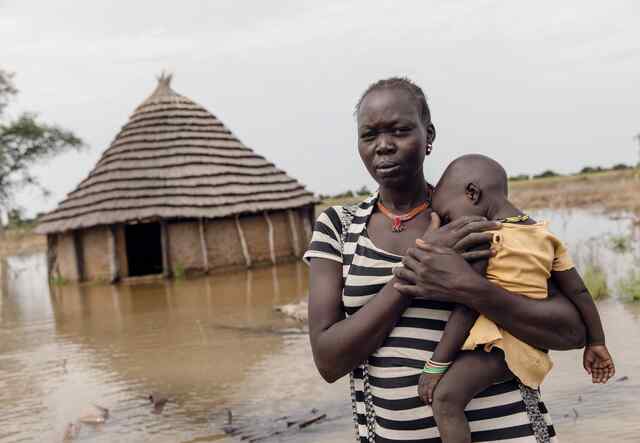
What is the IRC asking for at COP28?
COP (Conference of Parties) is a global climate conference where world leaders create policies to address climate change. 70,000 participants including heads of state, government officials, industry leaders, private sector representatives, academics, experts and youth representatives will attend the 28th installment of COP.
At COP28, the IRC is calling for:
- Improved risk mapping of conflict-affected communities to target action where it is most needed;
- Investment in innovative adaptation, resilience and anticipatory action designed for conflict settings;
- Adoption of a “people-first” approach to delivery through meaningful non-governmental partnerships;
- The delivery of equitable and accessible climate finance to adequately resource action.
Learn more about COP28 and how the IRC is addressing climate change.
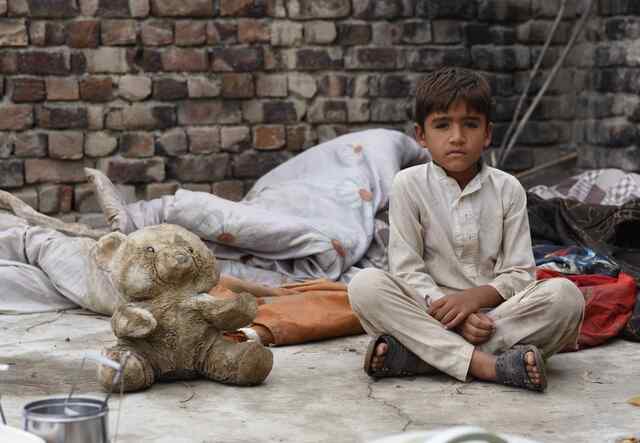
What is the IRC doing to address climate change?
The IRC is working hard in the countries most vulnerable to climate change. Our teams focus on climate adaptation, climate resilience and crisis response. The IRC responds to local crises while strengthening community resilience and capacity to adapt to a changing climate.
Our work includes anticipatory action against climate hazards, supporting community-led natural resource management and water conservation, and training people in sustainable livelihoods—all while putting the needs of women and girls at the centre of our work.
Learn more about how the IRC is addressing climate change.
*Pseudonym used for privacy
1. The IRC has identified 16 countries at the epicentre of crisis, where climate change and conflict are combined: Afghanistan; Burkina Faso; CAR; Cameroon; DRC; Ethiopia; Mali; Mozambique; Myanmar; Niger; Nigeria; Somalia; South Sudan; Sudan; Syria and Yemen.
